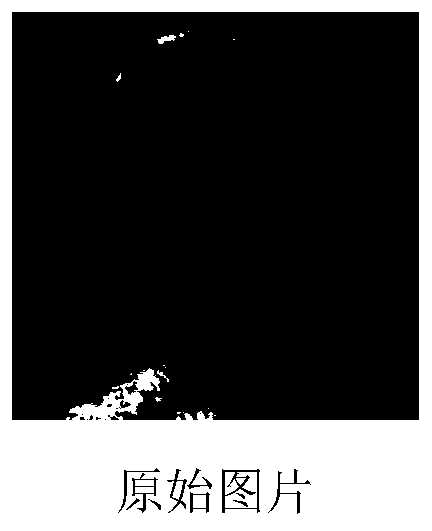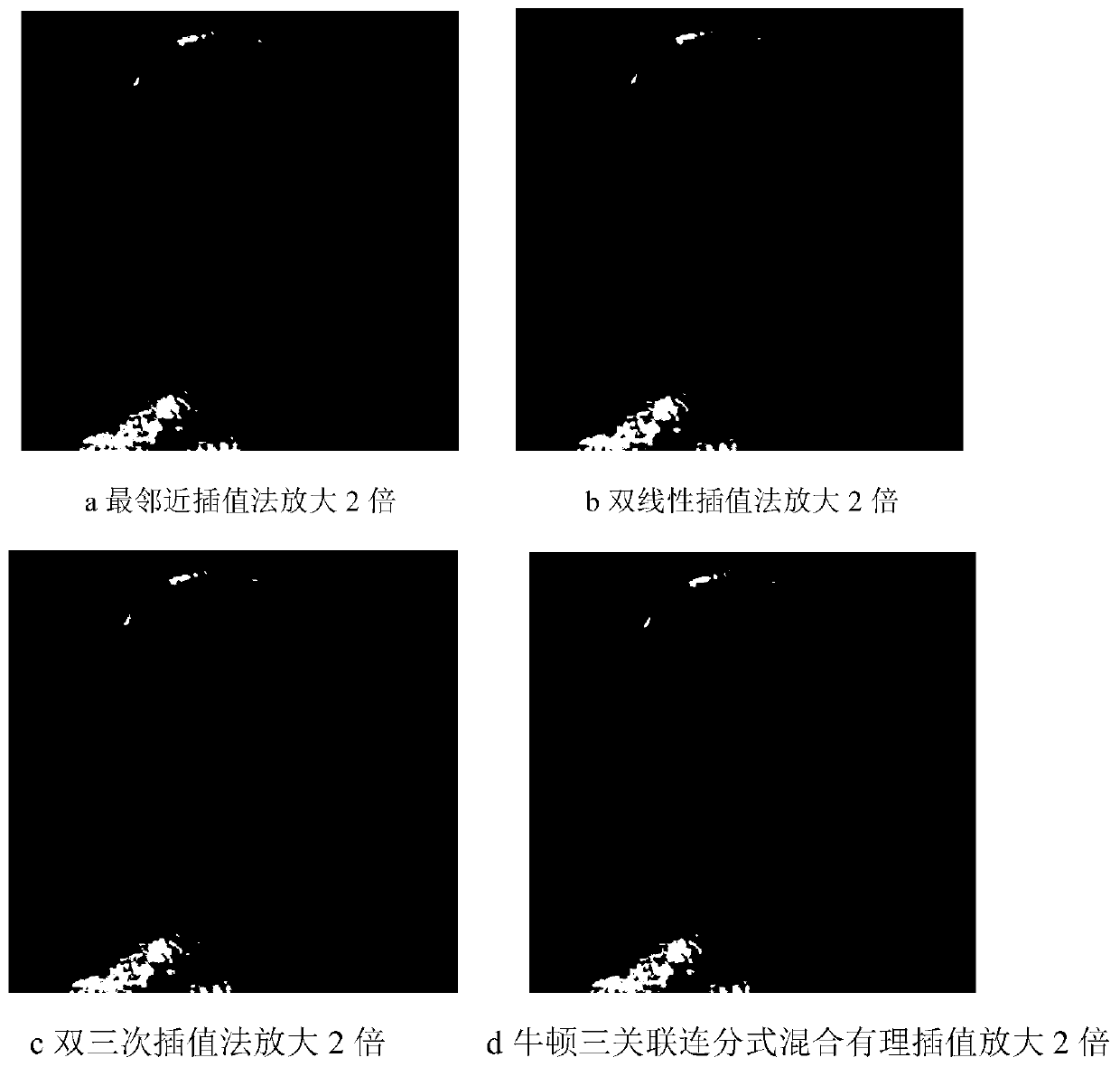Image scaling processing method based on Newton three-association continuous fraction mixed rational interpolation
A processing method and image scaling technology, which can be used in image data processing, graphic image conversion, instruments, etc., and can solve problems such as distortion, blurring, and aliasing.
- Summary
- Abstract
- Description
- Claims
- Application Information
AI Technical Summary
Problems solved by technology
Method used
Image
Examples
Embodiment 1
[0106] Construction of mixed rational interpolation of Newton's triple-connection continued fraction:
[0107] 1. Construction of mixed rational interpolation of Newton's triple-correlation continued fraction:
[0108] First construct a new binary mixed rational interpolation. The advantage of the continued fraction is that it is simple in structure and easy to calculate; only need to calculate the corresponding difference based on the interpolation method.
[0109] given the true set of a set of points
[0110]
[0111] and a function
[0112] f(x)∈C 3[n / 3]+3 [a, b] (3.1.2) It is well known that it can be extended to the following Newton interpolation with remainder
[0113]
[0114] when ω 0 (x)=1, ω i (x)=(x-x 0 )(x-x 1 )…(x-x i-1 ), i=1, 2, ..., 3[n / 3]+2, and f[x 0 , x 1 ,...,x i ] means different difference f(x) in point set x 0 , x 1 ,...,x i definition
[0115]
[0116] suppose
[0117]
[0118] then P 3[n / 3]+2 (x) is a polynomial coefficien...
Embodiment 2
[0195] As a comparison, Example 2 provides three traditional linear interpolation methods
[0196] 1. Nearest neighbor interpolation method
[0197] As an interpolation method with the most convenient implementation, the simplest algorithm and the fastest calculation speed.
[0198] Can be expressed as a polynomial:
[0199] g(x)=f(x k )(x k-1 +x k ) / 2k +x k+1 ) / 2
[0200] (2.2.1)
[0201] That is, the kernel function of the nearest neighbor interpolation is
[0202]
[0203] When the original image is doubled in full scale, the (0,0) pixel in the enlarged target image corresponds to the (0,0) pixel in the original image; the (0,1) pixel corresponds to (0,0.5) in the original image Pixel, which can be approximated as (0,0) or (0,1); (0,2) pixel corresponds to (0,1) pixel in the original image; (1,0) pixel corresponds to (0.5,0) in the original image ) pixels, which can be approximated as (0,0) or (1,0); (2,0) pixels correspond to (1,0) pixels in the original image....
Embodiment 3
[0219] Utilize the interpolation method that embodiment 1 and 2 provides to realize image scaling processing, the flow chart of processing is as follows figure 1 As shown, the specific steps are:
[0220] ①. Read an input image that needs to be scaled;
[0221] ②. Segment the image matrix into multiple small matrices with three rows and three columns;
[0222] ③. Process the edge matrix of the image: move forward enough rows or columns to make up three rows and three columns;
[0223] 4., carry out interpolation (the interpolation method that embodiment 1 and 2 provides) calculation to all small matrices respectively by loop control;
[0224] ⑤. Generate a new image matrix and display the processing results
PUM
 Login to View More
Login to View More Abstract
Description
Claims
Application Information
 Login to View More
Login to View More - R&D
- Intellectual Property
- Life Sciences
- Materials
- Tech Scout
- Unparalleled Data Quality
- Higher Quality Content
- 60% Fewer Hallucinations
Browse by: Latest US Patents, China's latest patents, Technical Efficacy Thesaurus, Application Domain, Technology Topic, Popular Technical Reports.
© 2025 PatSnap. All rights reserved.Legal|Privacy policy|Modern Slavery Act Transparency Statement|Sitemap|About US| Contact US: help@patsnap.com



